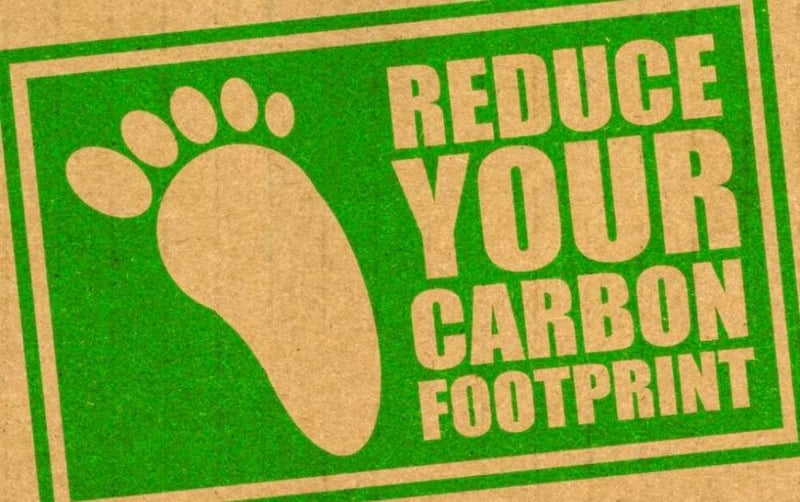A Guide to Calculating Your Carbon Footprint and Reducing Your Impact on the Environment
Submitted by: Josh Maraney
Climate change is one of the biggest challenges facing the world today, and reducing carbon emissions is an essential part of tackling this global problem. In this blog, we will explore the various strategies for reducing carbon emissions, including calculating carbon footprint, using carbon credits and offsets, implementing carbon taxes, and funding carbon offsetting projects. We will examine the benefits and limitations of each of these strategies and their impact on reducing global carbon emissions.
Calculating Carbon FootprintA carbon footprint is the total amount of greenhouse gases emitted by an individual, company or product. It is important to calculate carbon footprints to identify opportunities for reducing emissions. The factors contributing to carbon footprints include energy consumption, transportation, waste management, and food choices. There are various methods for calculating carbon footprints, including online calculators, software, and consulting services.
Carbon CreditsCarbon credits are a financial instrument that allows companies to invest in projects that reduce carbon emissions, such as renewable energy, forestry, and energy efficiency. They work by allowing companies to purchase carbon credits that represent a reduction of one metric tonne of CO2 equivalent. The benefits of carbon credits include incentivising emissions reductions and encouraging investment in green projects. However, the drawbacks include potential fraud and loopholes in the system.
Carbon OffsettingCarbon offsetting involves investing in projects that reduce carbon emissions to offset the carbon footprint of an individual or company. Examples of carbon offsetting projects include reforestation, renewable energy, and energy efficiency. The benefits of carbon offsetting include providing a solution for emissions that are difficult to reduce and encouraging investment in green projects. The drawbacks include potential negative environmental impacts and the potential for offsetting to be used as a way to avoid emissions reductions.
Carbon TaxA carbon tax is a tax on the carbon content of fossil fuels, aimed at reducing greenhouse gas emissions. It works by creating a financial disincentive for companies to emit carbon, thereby incentivising them to reduce their emissions. The benefits of a carbon tax include incentivising emissions reductions and raising revenue for climate action. The drawbacks include potential impacts on vulnerable populations and the potential for carbon-intensive industries to relocate to avoid the tax.
Carbon Offsetting ProjectsCarbon offset projects involve investing in renewable energy and other green initiatives to reduce carbon emissions. Examples of successful carbon offsetting projects include wind farms, solar energy, and afforestation projects. The challenges and limitations of carbon offsetting projects include the need for long-term commitment and funding, potential negative environmental impacts, and challenges in measuring the effectiveness of the projects.
Global Efforts to Reduce Carbon EmissionsGovernments and businesses around the world are taking action to reduce carbon emissions and combat climate change. This includes initiatives such as the Paris Agreement, which aims to limit global warming to below 2 degrees Celsius, and the growing trend towards renewable energy and other sustainable practices. However, there are still significant challenges to overcome, including the need for more ambitious targets and greater investment in green technologies.
ConclusionIn conclusion, there are various strategies for reducing carbon emissions, including calculating carbon footprint, using carbon credits and offsets, implementing carbon taxes, and funding carbon offsetting projects. Each of these strategies has benefits and drawbacks, and their effectiveness depends on various factors such as government policies, public opinion, and the availability of funding. Ultimately, reducing carbon emissions is a global challenge that requires collective action from governments, businesses, and individuals.
For more information, visit Neutralise | Carbon Offsetting Environmental Consultants
This article was first published at https://topclickblogs.co.za/a-guide-to-calculating-your-carbon-footprint-and-reducing-your-impact-on-the-environment/
Top Click is one of South Africa’s leading full-service digital marketing agencies. Our custom-built, cutting-edge solutions are targeted to help you attract customers, convert leads and grow your business. From SEO and Google Ads to social media marketing and digital design, our measurable marketing campaigns deliver results – and ensure that, in a cluttered online marketplace, you rise above the rest.
Latest from
- A Look at Different Types of Valuations
- Understanding Valuations in Property Assessment
- Understanding Cancer Care and Finding the Right Specialist
- A Guide to Student Accommodation Options
- Car Maintenance and Repair Services
- The Crucial Role of Private Investigators
- A Guide to Delicious Catering Options
- Exploring Soweto: A Guide to Memorable Tours
- A Guide to Choosing Plastic Seating
- A Simple Guide to Shipping Containers and Their Uses
- Streamlining Business Operations with Advanced Management Software
- A Simple Guide to Gearboxes and Vehicle Maintenance
- Why Factory Furniture Shopping Makes Sense
- Why Recliners Are a Great Choice for Any Living Space
- Medical Recliners That Support Comfort and Care

